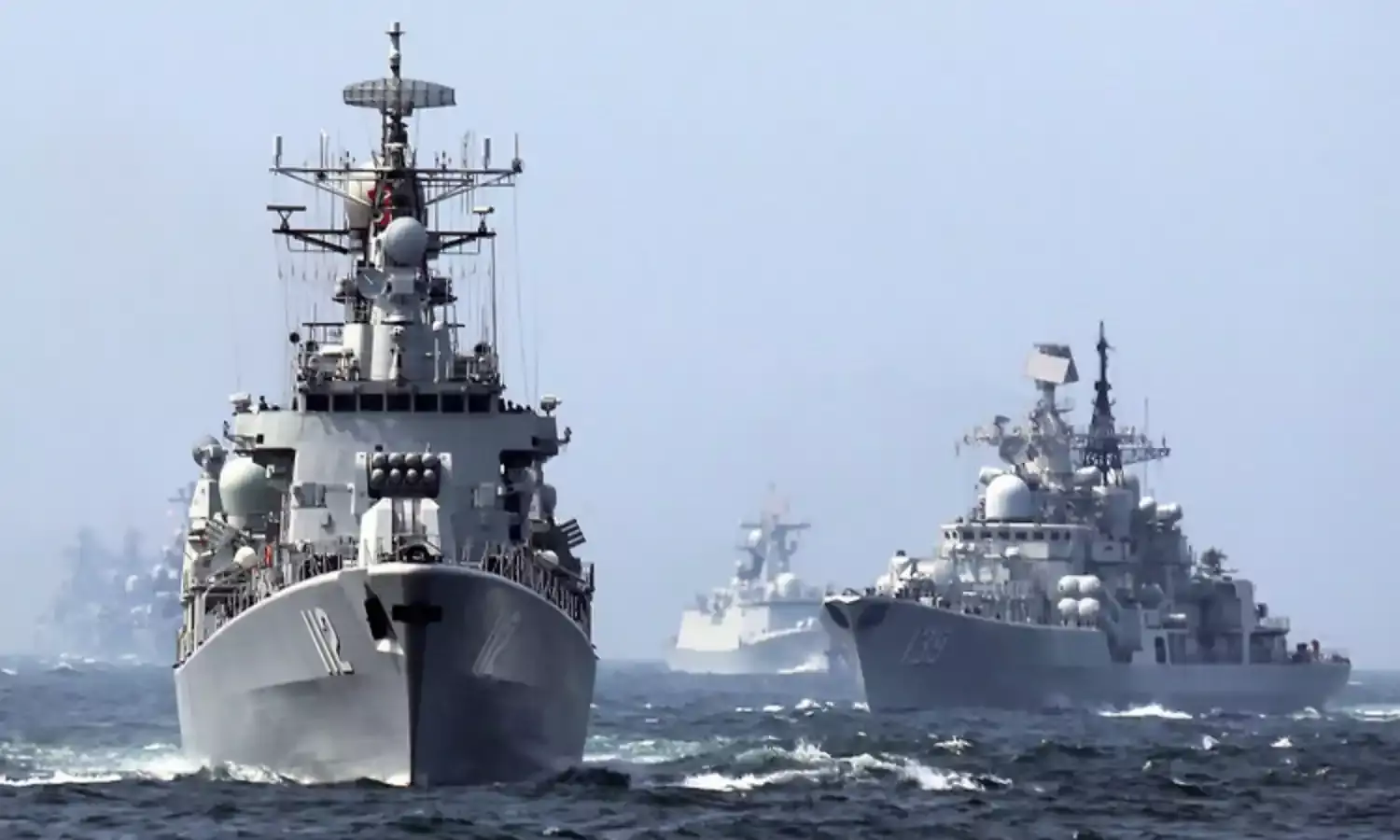The Jugular ‘Chokepoint’ of US-China Seaway Tensions Lurks Near Indian Waters
Back to the South China seas

The US-Chinese vitriol has shifted back from the trade tables to its more familiar turf of the South China Seas, where China has provocatively tested anti-ship missiles from the man-made structures around the intensely contested, Spratly Islands.
This area has been hotly counter-claimed in parts by Vietnam, Philippines and Taiwan, whereas the Chinese have brazenly appropriated sovereignty over the entire 1.3 million square miles of the South China Seas.
The restive waters of the region have seen shadowboxing of global powers with the US attempting a ‘balance’ with platforms like the Quadrilateral Security Dialogue or ‘Quad’ – potentially pooling strategic concerns and resources of major regional powers (US, Japan, India and Australia) that cannot be coerced like some others, who are directly affected by the Chinese belligerence and assertions.
This latest escalation has all the hallmarks of a typical Chinese incitement with Beijing reneging on its earlier pledge made by President Xi Jinping in 2015, that it would not militarise these outposts. To rub its symbolism, the Chinese publically announced the military exercises and missile-testing as an intrinsic part of the agenda, knowing fully well the reaction that it would elicit in the wary neighbourhood.
The primary stake for the Chinese in the ongoing war-of-attrition is to fructify its hegemonic ambitions, that therefore manifests in its trade wars with the US, unleashing of the gargantuan infrastructural inter-linkages via the Belt-Road-Initiate (BRI), stick and carrot policy of dominating neighbours, as indeed, keeping the kettle boiling for India with ‘Doklam’ or its more ambitious ‘String of Pearls’ approach.
It either bullies or buys subservience with impunity e.g. Philippines has succumbed to its willful subservience despite having won the case of maritime claims against the Chinese, in the International Court of Justice, Hague. In these melee, the chessboard of international diplomacy is rife with moves and countermoves to checkmate each other, with the brutal play of realpolitik overruling any sense of statesmanship or morality e.g. the deliberate veto-roadblocks that Beijing created in favour of Pakistan, while delaying the designation of Masood Azar as an ‘International Terrorist’, in the UN.
At the heart of this patented Chinese defiance is its famed economic juggernaut that is fueling its ambitions, power and stratagem to continuously, push ahead. The Chinese ‘economic miracle’ is predicated on the free-flow of materials to-and-fro from the mainland, including the survival linked energy resources that sustains its hyper-factories. This explains the Chinese restlessness and military build-up to keep its seaways free from any potential blockade. Beyond flexing its military muscle, China has also invested in a mammoth base of approximately 500 million barrels of Strategic Petroleum Reserves (SPR), as an emergency contingency, should the seaways ever get disrupted, deliberately or otherwise.
While the Chinese Navy still does not a ‘Blue Water Navy’ as yet, it has worked on the idea of ‘Pearl Ports’ in places beyond its arc-of-dominance in the South China Seas like Sri Lanka, Maldives to even Bangladesh and Myanmar. The doomsday scenario of a seaway ‘blockade’ (even temporary) can be fatal for the regime and it has led the Chinese to punt another $60 billion in the China Pakistan Economic Corridor (CPEC), as a possible alternative to the seaways.
However amidst this calculus of geostrategic maneuvers, lies the most vulnerable ‘chokepoint’ from a Chinese perspective i.e. the ultra-narrow and practically-unavoidable Malacca Straits, that open at the lower tip of Indian sovereign waters, afforded by the outpost of Andaman and Nicobar Islands, 1200 kms away from the Indian mainland.
Just 1.5km wide at its narrowest point, this strait is amongst the busiest sea-traffic in the world with over 1,00,000 vessels transiting a year, positioning an invaluable jugular-grip for India. Unlike the tensions of disputes and the domineering reach of the Chinese military in the South China Seas – the waters around Malacca Straits are undisputed and beyond the dominance zone of the Chinese.
The Chinese are extremely vulnerable and they have tried ‘investing’ in Malaysia, taken unwarranted interest in Coco Islands on the Northern tip of Andaman and Nicobar Islands, and even ‘leased’ a port in Sri Lanka for 99 years, yet no major breakthrough has been achieved by the Chinese, and the jugular of Malacca Straits, exists.
This jugular amongst the other scale-strengths of India underlies the strategic logic of US ‘pivot’ against the Chinese. In a symbolic ode to the Indian dimension and inevitability, the US renamed its unified command for the region to ‘United States Indo-Pacific Command’ (USINDOPACOM) to recognize the specificity of Indian theatre.
It is this command which is at the forefront of countering the Chinese machinations and shadowboxing with its own counter-moves. So far the military moves of the South China Seas have not extended to areas proximate to the Andaman and Nicobar Islands, though India too holds a defensive Tri-Services command of its own in these Islands.
The government is looking into adding ‘firepower’ by way of infrastructure and wherewithal, given the strategic stakes and potential levers in its vicinity. So while the US-Chinese tensions may not be resonating in our backyard, just as yet – the stakeholders, military-commands and concerns of the South China Sea tensions have their conceptual epicenter and jugular in an area that is looming in the shadows of Indian territorial waters.
Lt General Bhopinder Singh (Retd) is a Former Lt Governor of Andaman and Nicobar Islands & Puducherry



